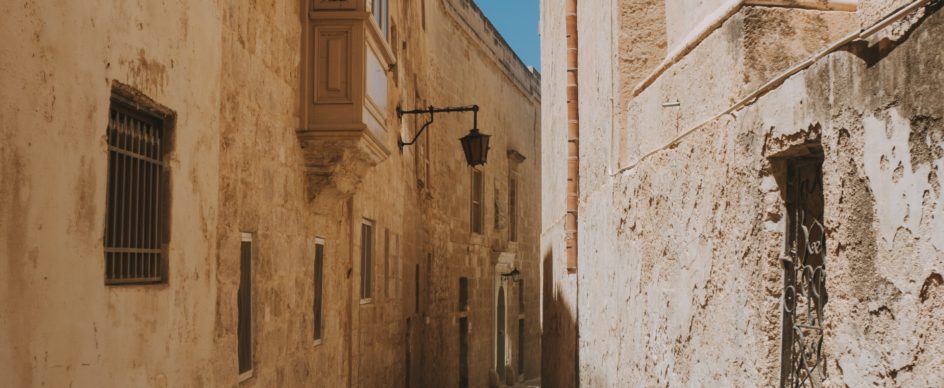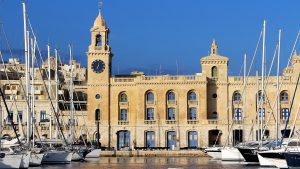
Birgu – Citta’ Vittoriosa
- Apr 11, 2020
All you need to know about Birgu!
Birgu (also known as Vittoriosa) represents everything that’s appealing about the Mediterranean: ancient walled towns, historic buildings, museums, quaint pubs and restaurants, luxurious yachts and ports and sea that’s just within reach.
Here’s everything you need to know before visiting Birgu.
Birgu’s History
Due to its seaside location in the south-eastern region of Malta, Birgu has a very long and rich maritime, mercantile and military history.
Its origins can be traced back to medieval times, and its existence pre-dates that of Malta’s current capital city, Valletta. Military powers that wanted to rule Malta needed to conquer Birgu in order to be successful in their conquest.
Birgu served as the Order of St John’s base as well as the islands’ capital between 1530 and 1571. It’s mostly known as a key player in the Great Siege of Malta, back in 1565. In fact, the city’s main fortification, Fort St Angelo, was built as part of a larger fortification plan in the 1530s and 1550s in preparation for the eventual attack by the Ottoman Empire.
After Napoleon and his comrades took over the islands in 1798, the French sought to defend themselves by occupying the city. After the Maltese rebels blockaded the Grand Harbour area (assisted by Britain, Portugal and Naples), the French had no option but to leave. Soon after (in 1800), Malta became British territory, and the Royal Navy established a Mediterranean Fleet stationed in Birgu. Due to its strategic location, Birgu was heavily bombed during World War II, and unfortunately, several historic buildings were destroyed.
After millennia, Fort St. Angelo still overlooks and protects the city. The historical site underwent major restorations in the 2000s and is now open to the public.
Historical Sites & Museums
The structure of Birgu itself makes any visitor feel like they’re stepping in an open-air museum. The maze of winding streets, the typical Maltese gallarijas (terraces) embellished with potted plants and other colourful embellishments, and the early 18th-century city gates make you feel like you’re a character in a period drama.
The Inquisitor’s Palace is a museum that documents Malta’s Inquisition period (1571-1798). Visit the dungeons and courtyard, and prepare to go through a roller-coaster of emotions as you experience this gruesome part of history. The building is also home to the National Museum of Ethnography, which is also worth a visit.
Malta’s Maritime Museum is situated on the Birgu Waterfront and explores Malta’s vivid maritime journey. At the Maritime Museum, you’re able to witness model ships, maps, nautical instruments, sailor uniforms and whatnot.
The Malta At War Museum is another history-related museum that dives deep into Malta involvement in WWII. The tour includes a 30-minute original documentary, and the opportunity to experience a real-life underground raid shelter as well as a collection of war relics.
St Lawrence’s Parish Church is an important building considering Malta’s strong Catholic tradition. It was originally the Order of St John’s conventual church and is now Birgu’s parochial church. Like a lot of buildings in Birgu, the church was heavily bombed during the war and had to be re-built in the ’50s.
Restaurants, Food & Wine
Start your day with a coffee and croissant from one of Birgu’s quaint village square cafes’ while enjoying the sun’s rays.
Al fresco dining is part and parcel of the Maltese lifestyle. This is particularly possible thanks to the numerous outdoor cafes and restaurants serving exquisite Mediterranean dishes present in Birgu.
Grab a bite at one of the local restaurants (fish is highly recommended!) and stroll along the promenade for a spot of people and yacht watching. We recommend Osteria.ve or Tal-Petut (by bookings only) if you prefer home made dishes. You can always book a boat trip on one of these luxurious yachts if that’s your thing.
In the evening, stop for a drink at the chic wine bar Del Borgo. After this, discover the mythical secrets of the illuminated alleyways, and let your imagination run wild as you continue to explore the city at night.
When to visit Birgu?
Birgu is an exquisite spot that can be visited all year round. However, as a traveller, it’s useful to know that Birgu’s highly-anticipated festival – Birgufest – takes place in October. Historical re-enactments take place, museums extend their entrance time and are usually free to visit, and the pjazza plays host to several musical performances. Food and crafts play a big part in the festivities, as several local eateries and artisans showcase their wares in the streets of Birgu.





